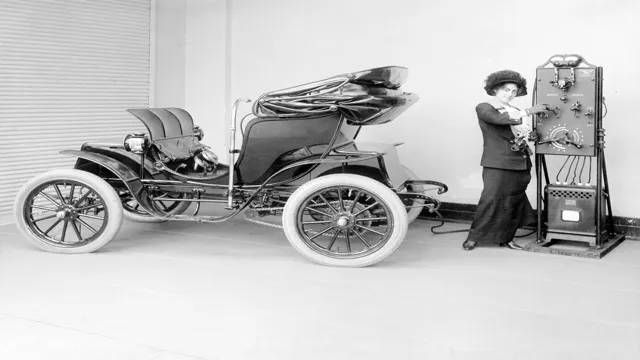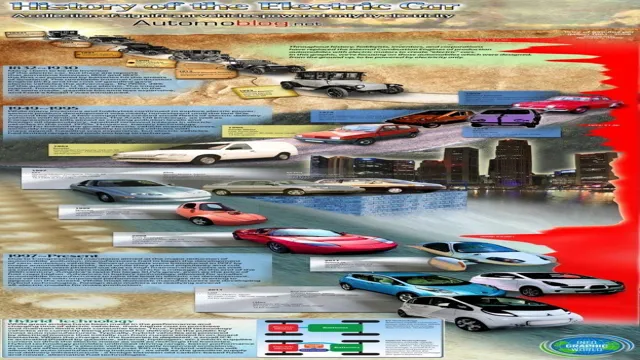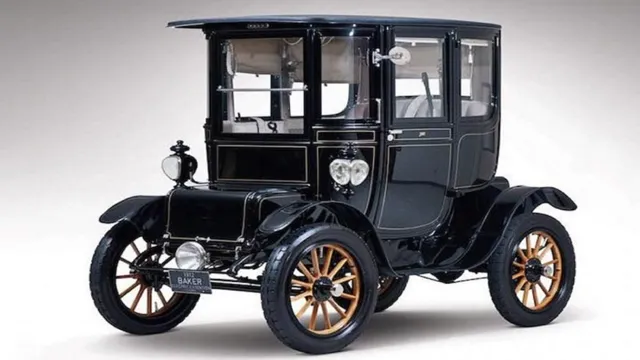From Crank to Convenience: Tracing the Evolution and History of Electric Windows in Cars
Electric car windows have come a long way over the years, evolving from a manual crank handle to a push of a button. The convenience of automated windows has revolutionized the driving experience. Gone are the days of struggling to manually open and close car windows.
Electric car windows ensure passengers can easily adjust the amount of fresh air they want without putting in much effort. However, have you ever wondered how this technology came to be? In this post, we will explore the fascinating evolution of electric car windows, from early designs to modern touch screen interfaces. So, let’s take a trip down memory lane and discover how electric car windows have changed over time.
Early beginnings of car windows
The history of electric windows in cars dates back to the early 20th century when automobiles started to become more common. However, the first car windows were not electric at all but were operated manually by the drivers or passengers who had to turn a crank to open or close them. This was not only inconvenient but also dangerous in some cases, especially if the car was moving at high speeds.
Early attempts at making car windows electric involved using vacuum systems or hydraulics, but these proved to be unreliable and expensive. It was not until the 1950s that electric windows became more common in luxury cars, but it was not until the 1970s that they became a standard feature in most automobiles. Nowadays, electric windows are not only expected but have also become more advanced with features such as automatic up and down options, anti-pinch sensors, and press-and-hold functions.
Invention of electric power windows
Car windows have come a long way since the early days of automobiles. In the beginning, cars were equipped with basic manual windows that required drivers to use a hand-operated crank to roll them up or down. However, as technology progressed, so did the convenience and functionality of car windows.
One such invention that revolutionized the automotive industry was the electric power window. The concept of power windows was introduced in the 1940s, but it wasn’t until the 1950s and 1960s that they became more widely available in American cars. However, they were costly and only available in high-end models.
These early power windows used a hydraulic system with a motor to raise and lower the windows, but they were unreliable and prone to failure. It wasn’t until the 1970s that electric power windows became more dependable and more commonly installed in cars. These power windows used an electric motor and a gear-driven system to roll up and down the windows.
The convenience of this new technology was undeniable, allowing drivers and passengers to effortlessly control their windows with the simple push of a button. Today, electric power windows are a standard feature found in almost all modern vehicles. They provide added convenience, increased safety, and an enhanced driving experience.
The evolution of car windows from basic manual cranks to electric power windows is a testament to the ingenuity and innovation of the automotive industry.

Widespread adoption of electric windows
The early beginnings of car windows date back to the late 19th century when cars were first being designed. At that time, car windows were manually operated, requiring the driver or passenger to physically roll them up and down. It wasn’t until the mid-20th century that electric windows started to become more widespread.
Electric windows were a significant improvement over their manual predecessors, making it easier and more convenient to adjust the windows. Nowadays, most cars come equipped with electric windows, giving drivers and passengers the ability to easily regulate the temperature in the car and allowing for more comfortable rides. Overall, the widespread adoption of electric windows has been a game-changer for the car industry, providing drivers and passengers with greater comfort and convenience when traveling.
Advancements in electric window technology
The history of electric windows in cars dates back to the early 1900s when automobiles were first experiencing an era of rapid technological advancements. Before electric windows were introduced, crank handles were used to manually roll down the windows, which was tedious and tiring for drivers. In the 1930s, car manufacturers began installing electric motors in vehicles, which could be controlled by a switch to raise or lower the windows.
Over the years, electric windows have evolved to become more advanced, including features such as automatic up and down functions, pinched protection sensors, and even rain sensing technology. Today, electric windows are a standard feature on most vehicles, providing drivers with easy and convenient access to fresh air and a pleasant driving experience. It’s amazing to see how much technology has progressed since the first electric window was introduced and it will be interesting to see what new advancements the future holds.
One-touch automatic windows
Electric windows have come a long way since their inception, with significant advancements in technology making them more convenient and easier to use than ever before. One such innovation is the development of one-touch automatic windows, allowing drivers to effortlessly roll down or up all the windows in their car with just a push of a button. This feature has quickly become a must-have for many vehicle owners, providing them with a simple and seamless way to enjoy fresh air or protect themselves from the elements.
Thanks to the use of sensors and intuitive controls, one-touch automatic windows are incredibly user-friendly and straightforward, making them both practical and efficient. With these advancements, electric windows have become a crucial feature for any modern vehicle, offering convenience and performance like never before.
Integration with car electronics
Electric window technology has seen significant advancements in recent years, especially in terms of integration with car electronics. With more and more vehicles moving towards electric power sources, the need for efficient electric window technology has become paramount. One of the most significant developments is the integration of electric windows with the car’s central locking system, providing added convenience and security to drivers.
This innovation means that drivers can remotely control the opening and closing of their vehicle’s windows, providing a safer and more secure environment when parked. The electric windows can also detect obstacles and automatically stop closing to prevent any damage, enhancing safety even further. These advancements in electric window technology have not only improved the driver’s experience but also made vehicles even more efficient, a significant development in the continuous drive towards sustainable transport.
Safety features like obstacle detection
Advancements in electric window technology have brought about increased safety features like obstacle detection. The push towards more efficient and practical designs have resulted in windows that are not only fast, but also automatically stops when it detects any obstruction in its path. This technology not only serves as a safety feature for cars, but also in other aspects such as smart buildings.
For instance, electric windows that can detect when you are approaching and automatically open or close can save a lot of energy used in air conditioning, especially during hot summer days. With the right technology, these windows can also adjust their tinting based on the amount of sunlight entering the building to regulate the temperature and create a comfortable environment for its occupants. It is exciting to see what new advancements will emerge in the near future with electric window technology.
Electric window market trends
The history of electric windows in cars is a fascinating one. Electric windows were first introduced in luxury cars in the 1940s, but it wasn’t until the 1960s that they began to become more widespread. At first, electric windows were seen as a luxury feature that only the wealthiest could afford.
However, as technology improved and the cost of production decreased, electric windows began to be included as a standard feature in many cars. Today, electric windows are considered a necessary feature in any modern vehicle, and they are widely available on all types of cars. In fact, most car buyers expect to have electric windows as a standard feature, and many would not consider purchasing a car without them.
As technology continues to improve, it will be interesting to see how the design and functionality of electric windows evolves over time.
Growing demand for electric windows
Electric window market trends are indicating a growing demand for these convenient and technologically advanced windows. With the rise of electric cars and smart home technology, it is no surprise that people are seeking out the added convenience and comfort that electric windows provide. Not only do they allow for easy operation with just the touch of a button, but they also offer improved safety features such as automatic closing during emergency situations.
Additionally, electric windows can enhance the overall aesthetics of a vehicle or home by eliminating the need for bulky manual cranks or levers. As the demand for energy-efficient and technologically advanced products continues to rise, it is likely that the market for electric windows will also see continued growth.
Impacts of electric windows on car design
As the electric window market continues to grow, car designers are adapting to the new trend in automotive technology. One of the main impacts of electric windows on car design is the shift away from traditional manual window cranks that have been a staple feature on cars for decades. With electric windows, car manufacturers can now incorporate sleek and modern designs without the bulk of the crank system.
Reduced weight and increased aerodynamics also allow for improved fuel efficiency and overall performance. Additionally, electric windows provide added convenience for drivers by allowing for simple and effortless adjustments with just the touch of a button. As the market for electric windows continues to expand, we can expect to see even more innovative designs and features incorporated into the cars of the future.
What is the future of electric car windows?
The history of electric windows in cars extends back to the 1940s when General Motors introduced power windows in luxury vehicles. The feature gradually became more common in the decades that followed, but it wasn’t until the 1990s that most cars had power windows as standard. Today, we are seeing the next evolution of electric car windows, with the introduction of advanced features such as automatic glare reduction and self-tinting capabilities.
In addition to enhancing the driving experience, electric windows are also becoming more efficient, with new energy-saving technologies in development. As electric cars continue to gain popularity, we can expect to see even more innovation in this area, with windows playing a key role in improving performance and reducing environmental impact. So, if you’re thinking of purchasing an electric car, keep an eye out for the latest window technology, as it could make a big difference in your overall driving experience.
Conclusion
And there you have it, the electrifying history of electric windows in cars. From the first crank-operated window in 1930s luxury vehicles to the widespread adoption in modern cars, electric windows have brought convenience, safety, and style to drivers around the world. So next time you effortlessly roll down your car window with the touch of a button, take a moment to appreciate the remarkable engineering and technological advancements that have made it possible.
And if you feel inclined to give your window a little extra high-five, hey, we won’t judge.”
FAQs
When were electric windows first introduced in cars?
Electric windows were first introduced in cars in the mid-1940s.
Did all cars come with electric windows when they were first introduced?
No, electric windows were only available in luxury cars when they were first introduced.
What was the main advantage of electric windows in cars?
The main advantage of electric windows was the convenience they provided as drivers did not need to manually crank open and close the windows.
How did the adoption of electric windows change the design of cars over time?
The introduction of electric windows allowed for more streamlined designs of car doors and windows, as the bulky crank mechanisms was no longer necessary.
Are electric windows standard in all cars now?
Yes, electric windows are now standard in almost all cars, regardless of their price point.






